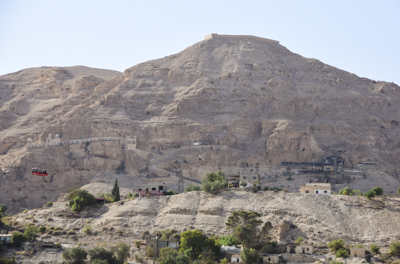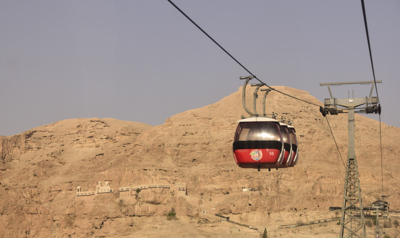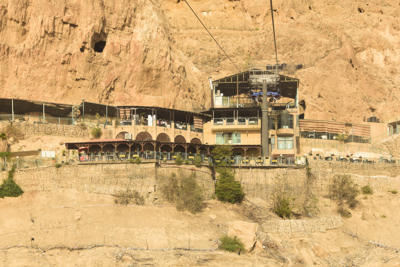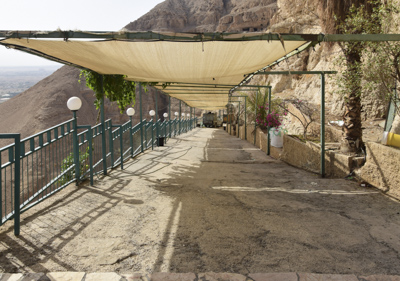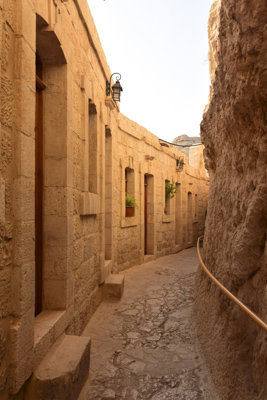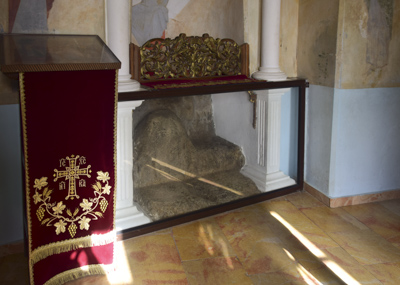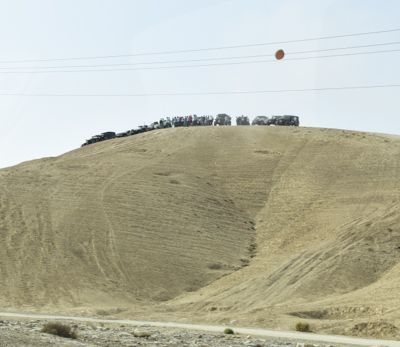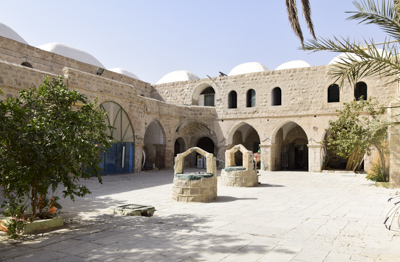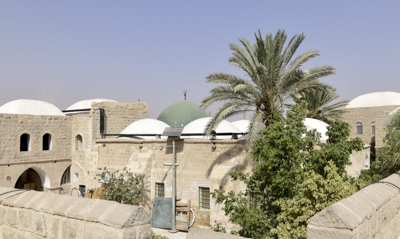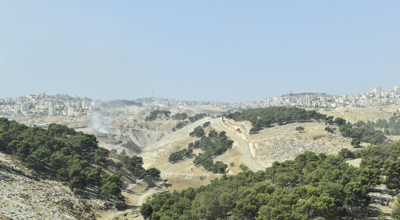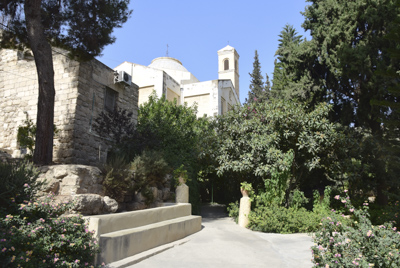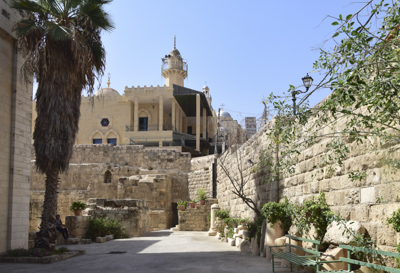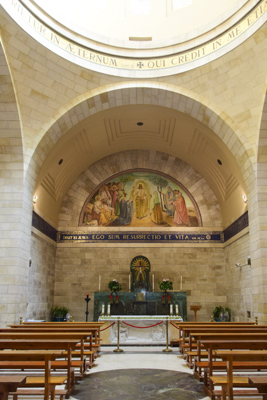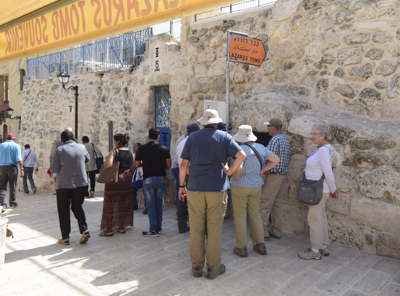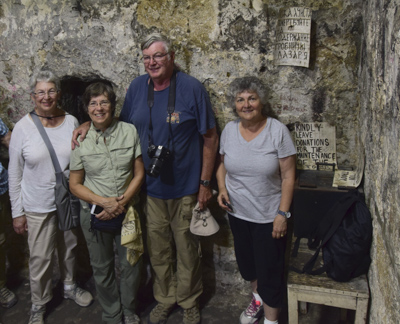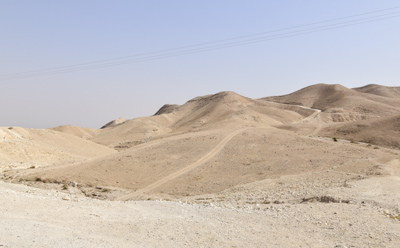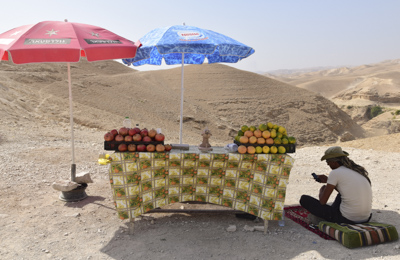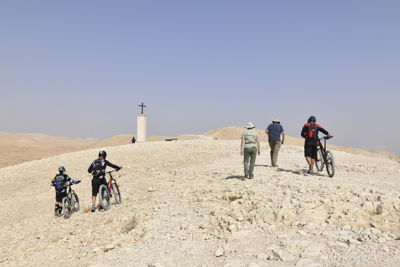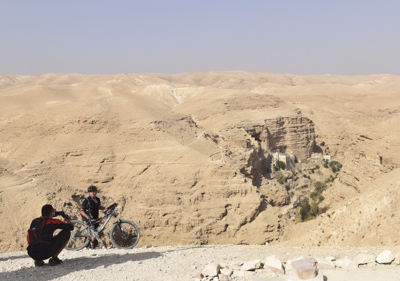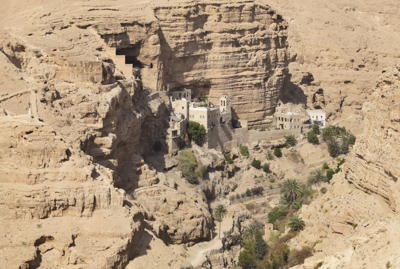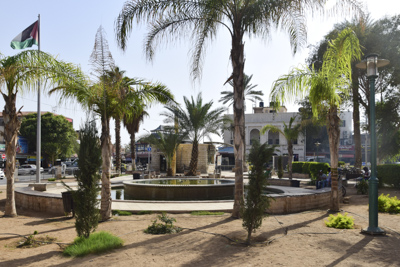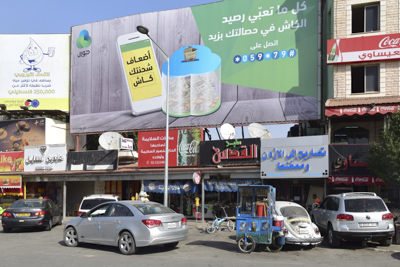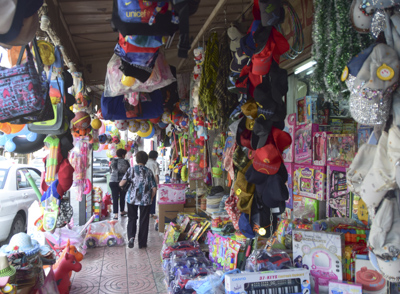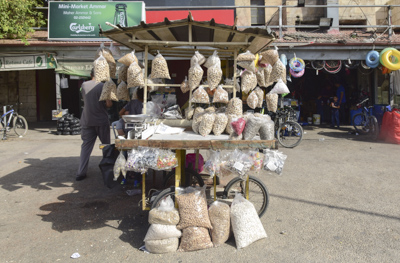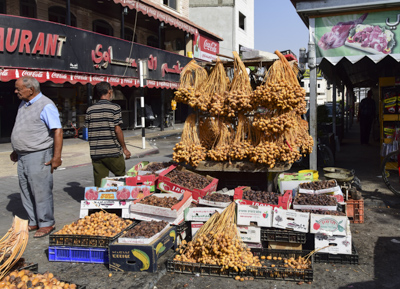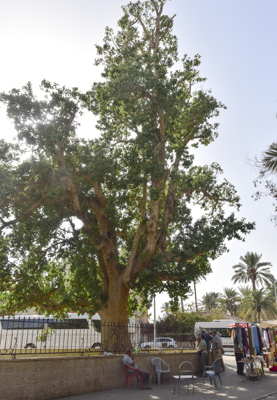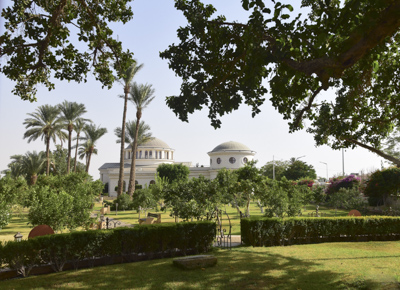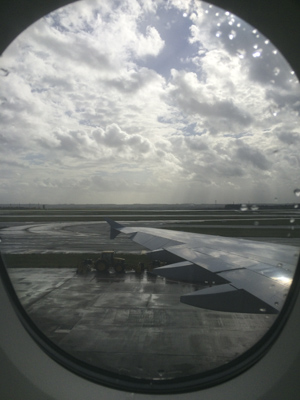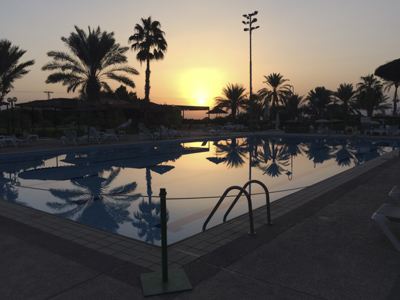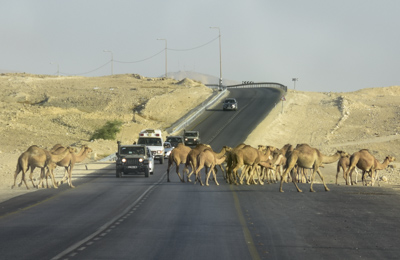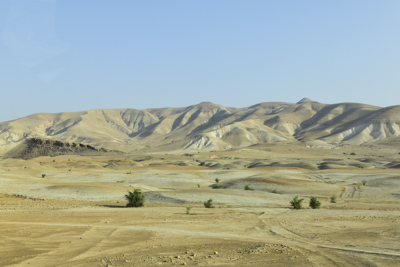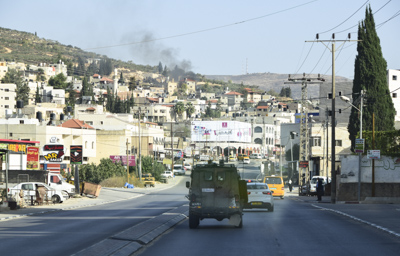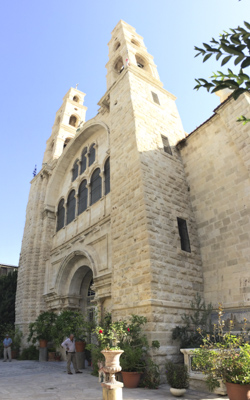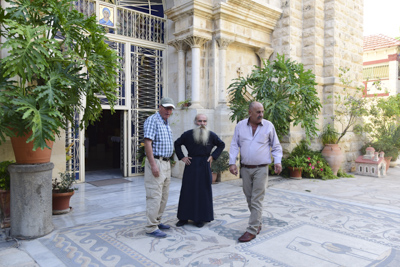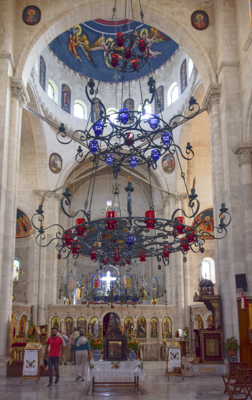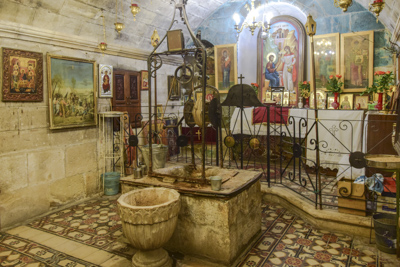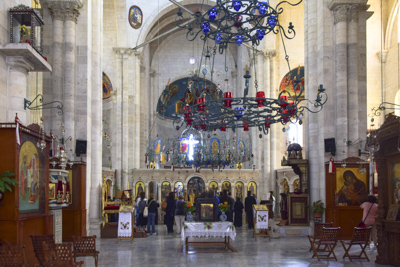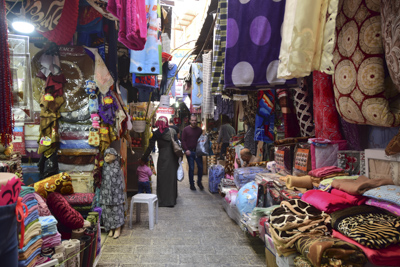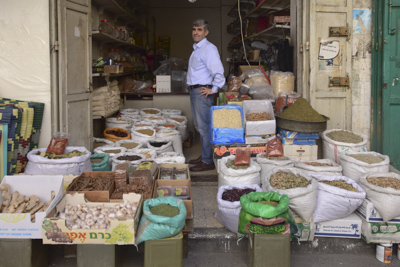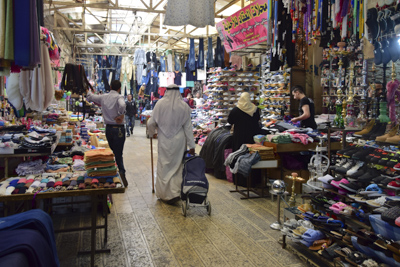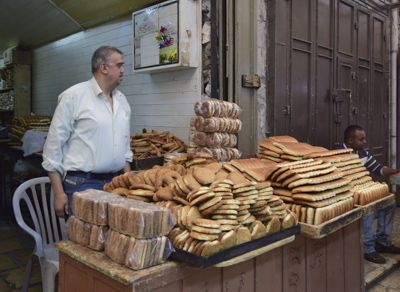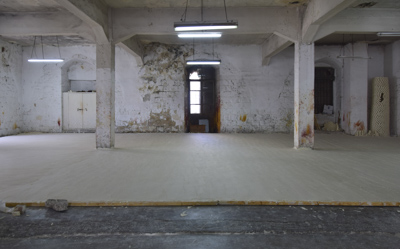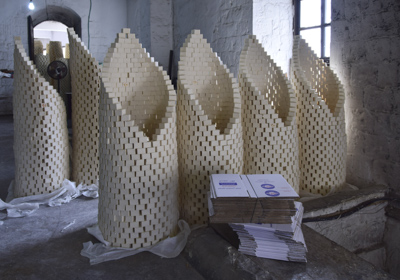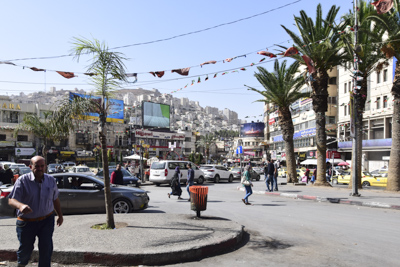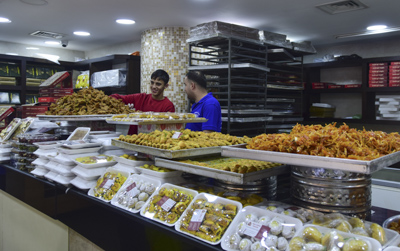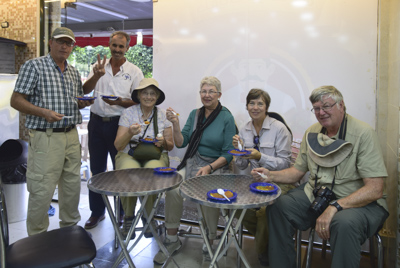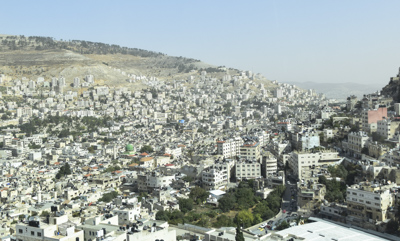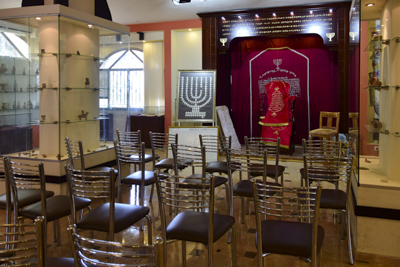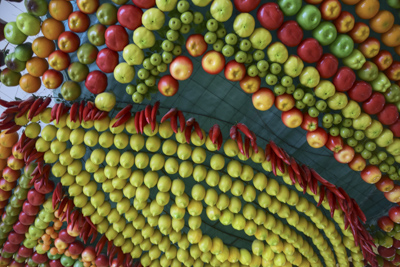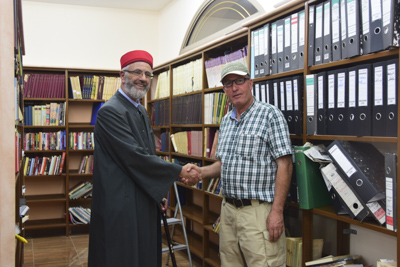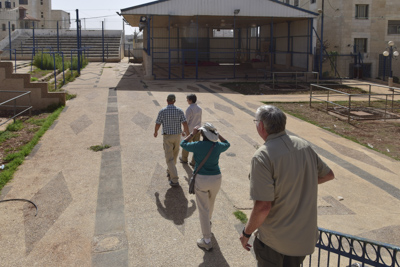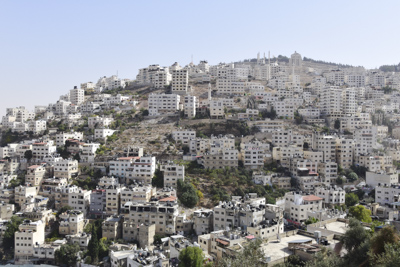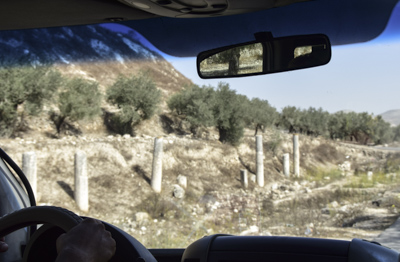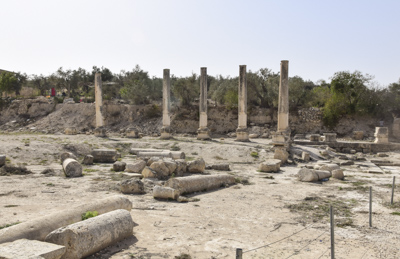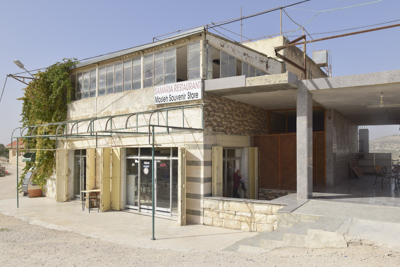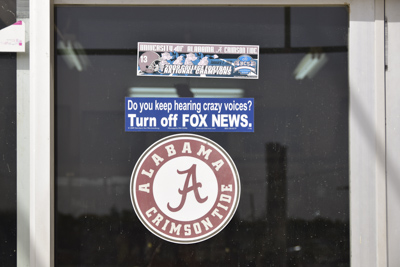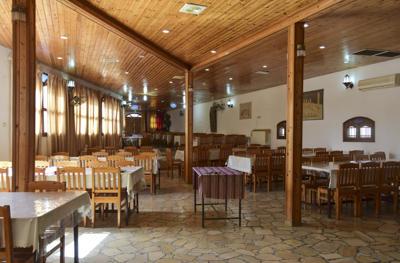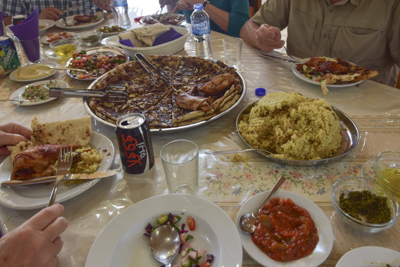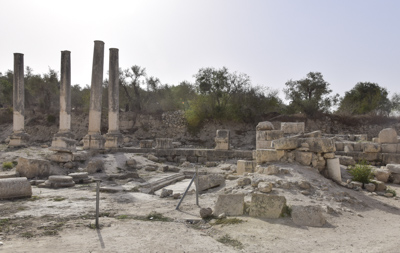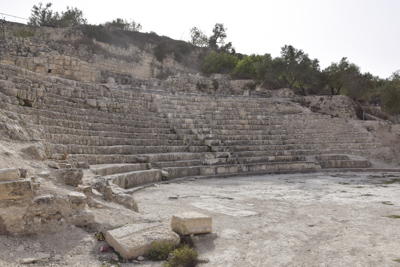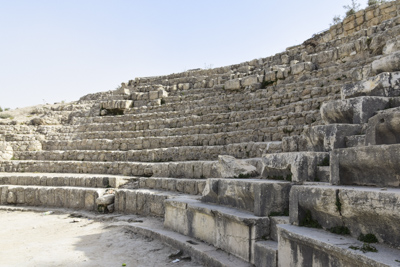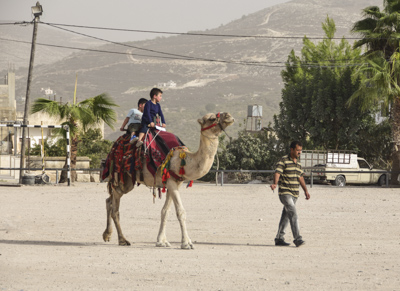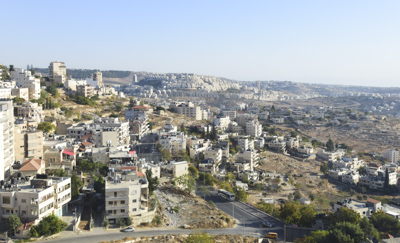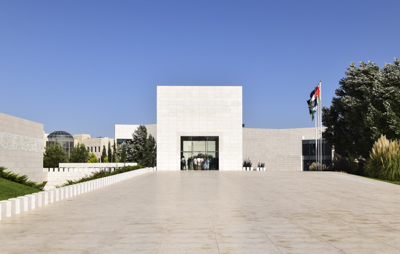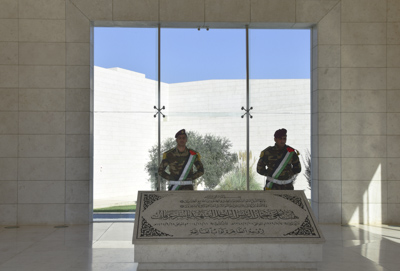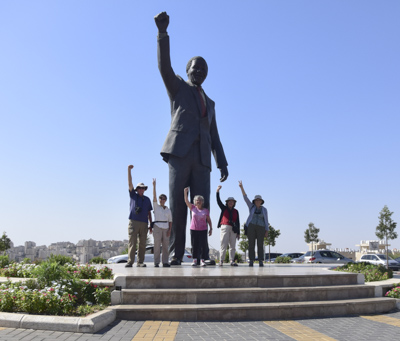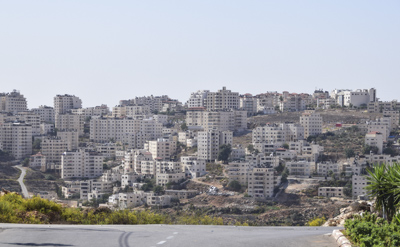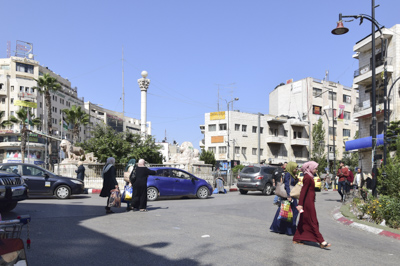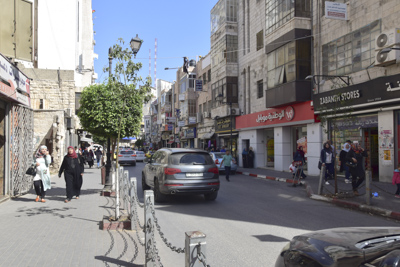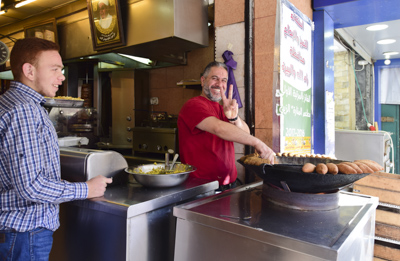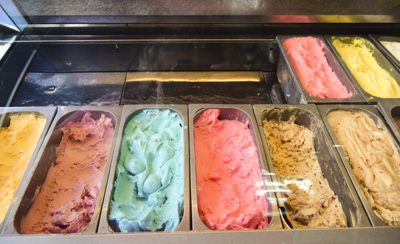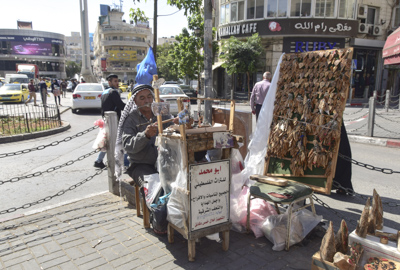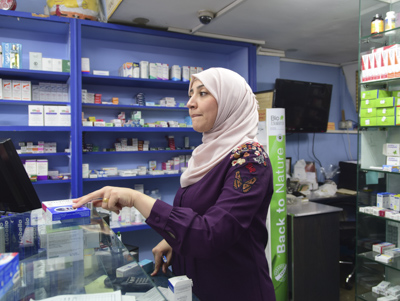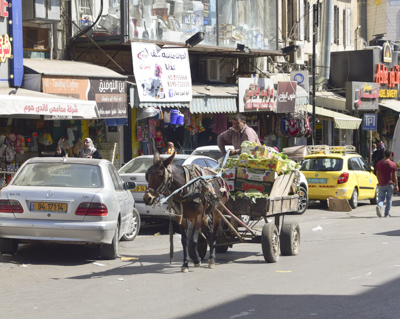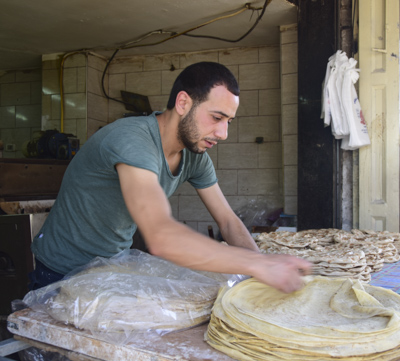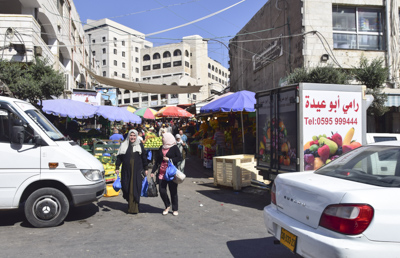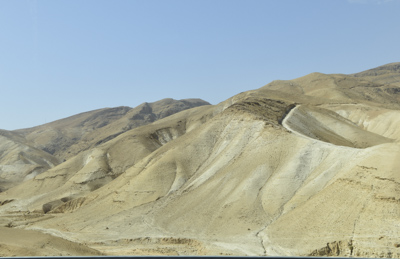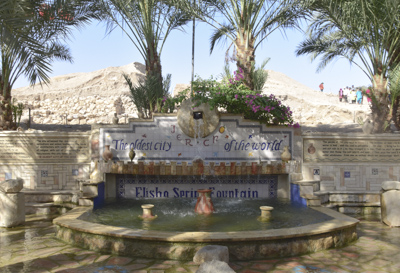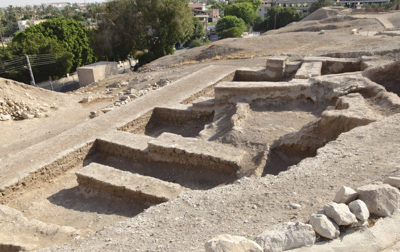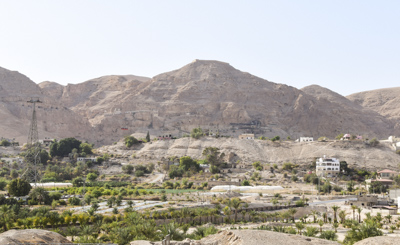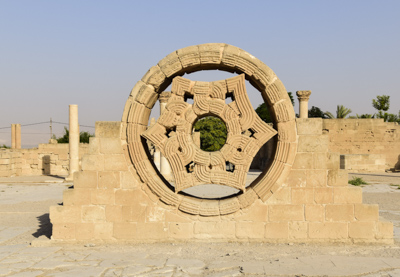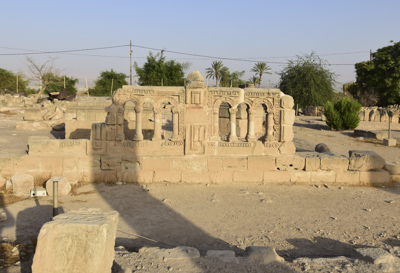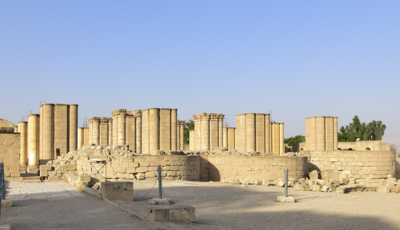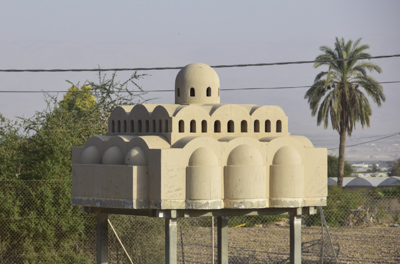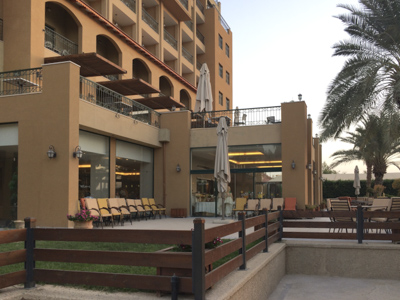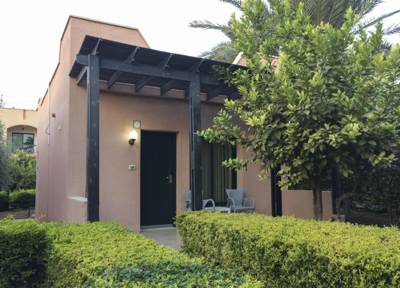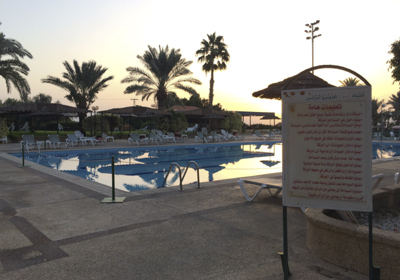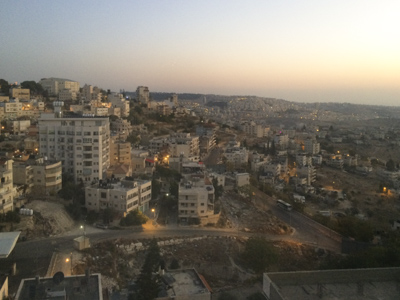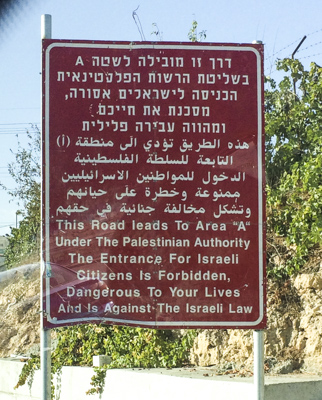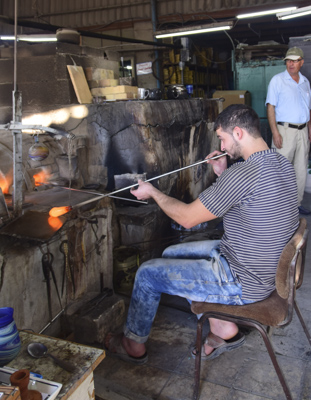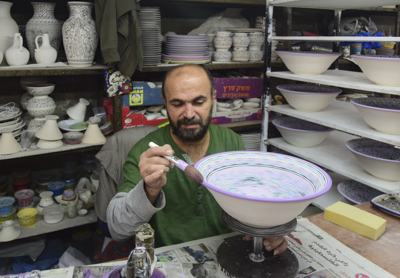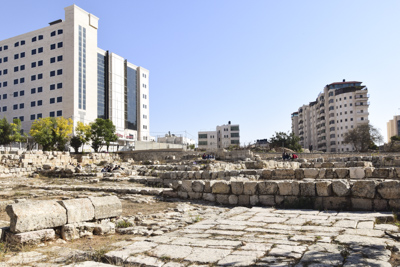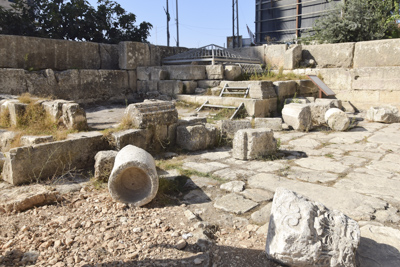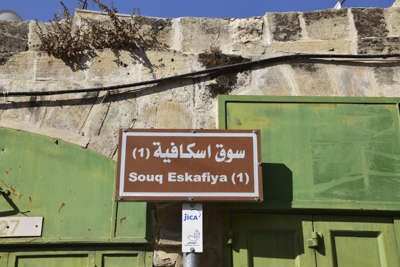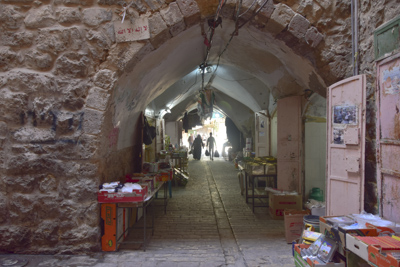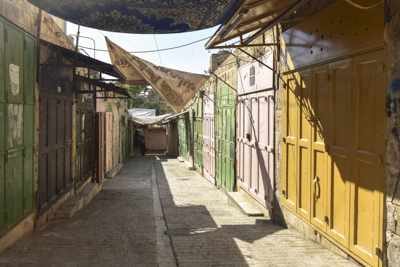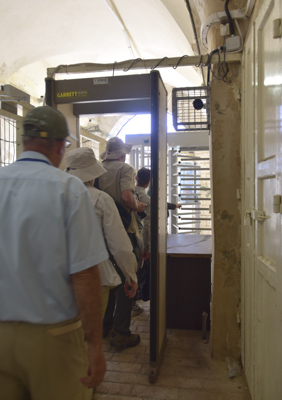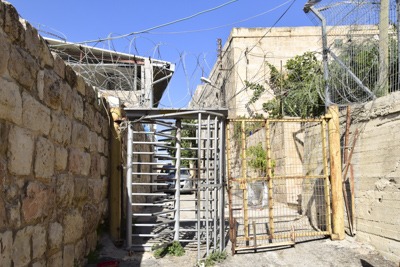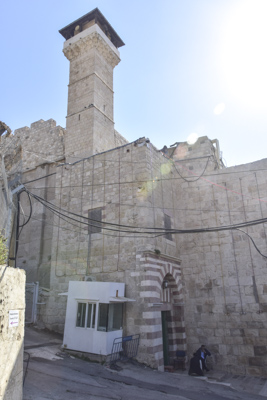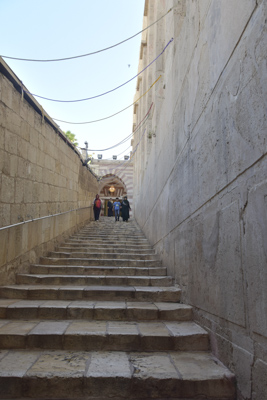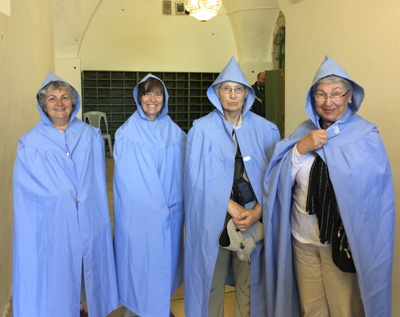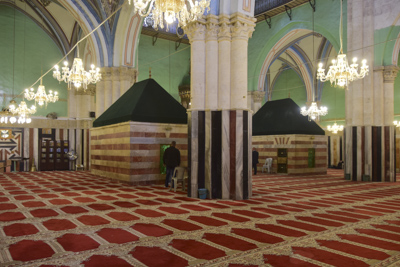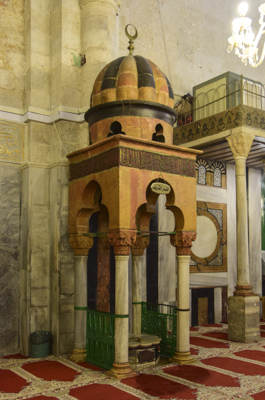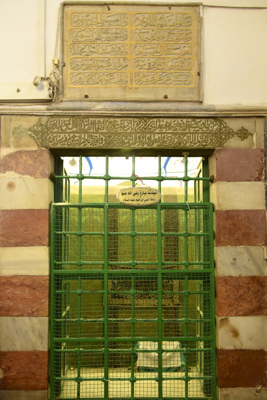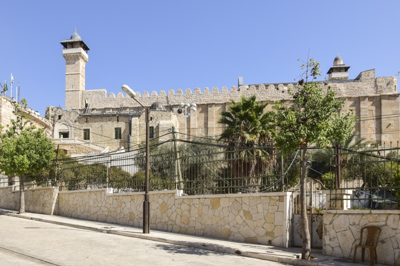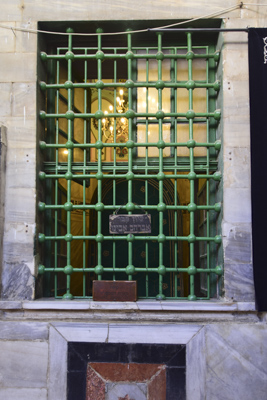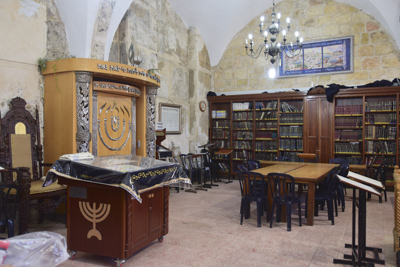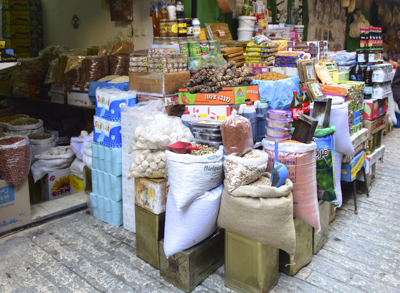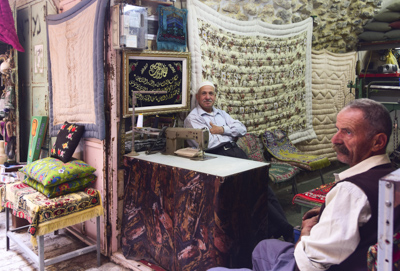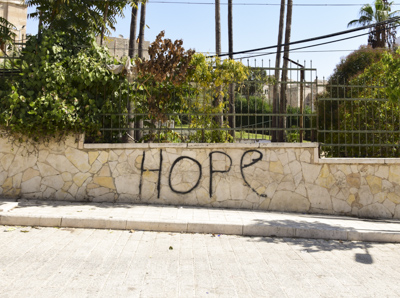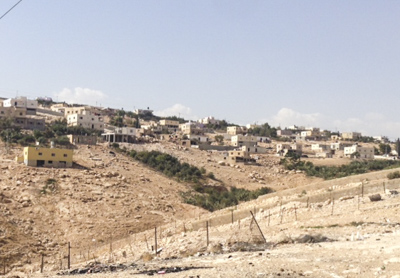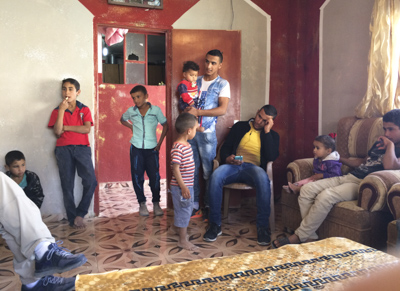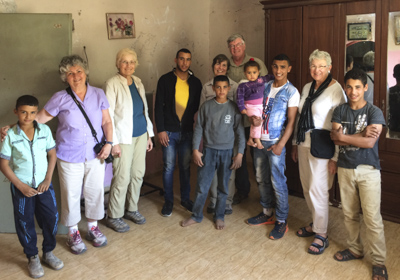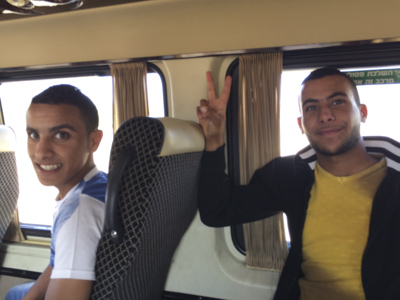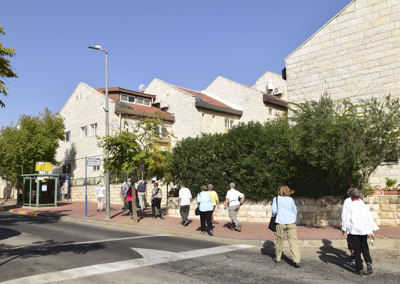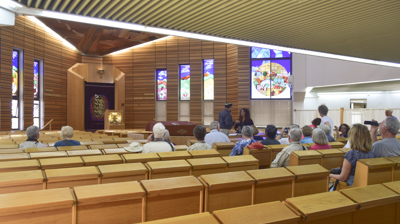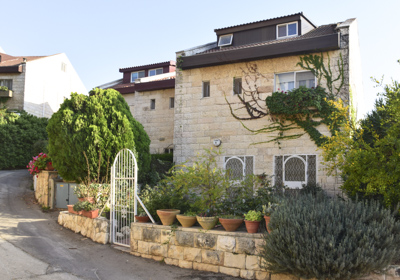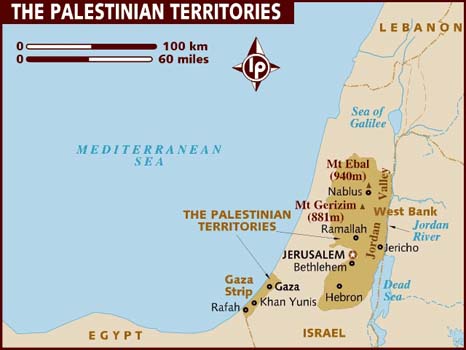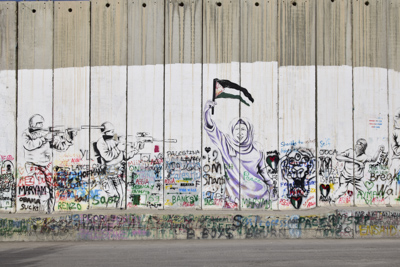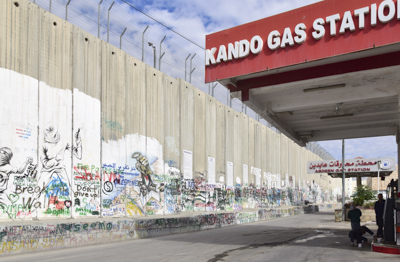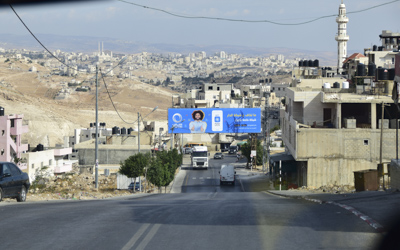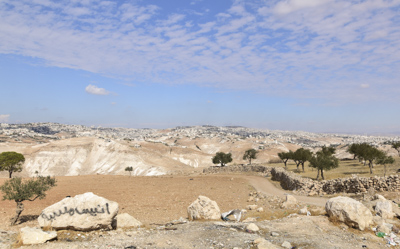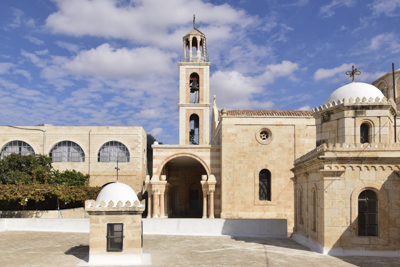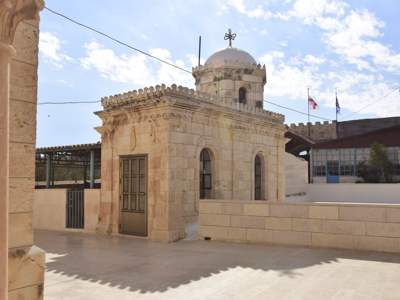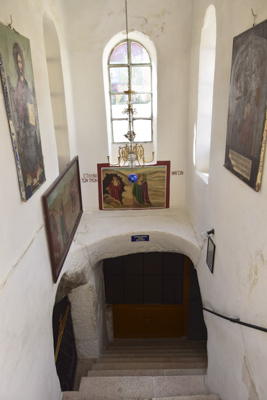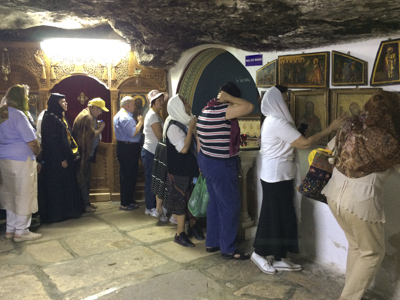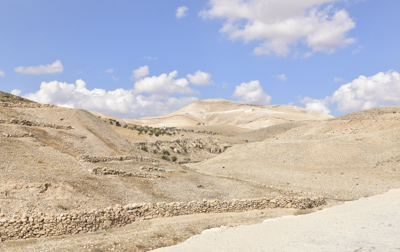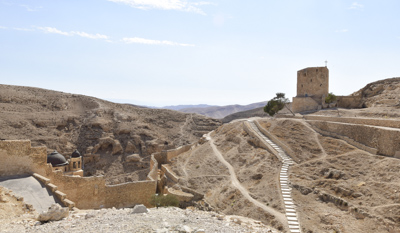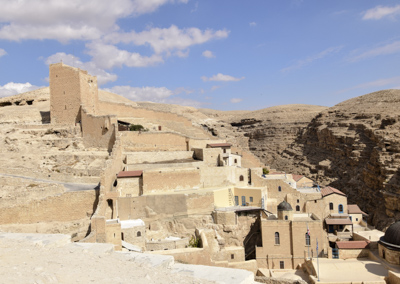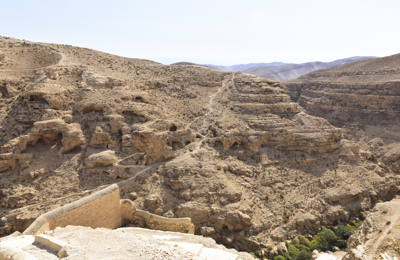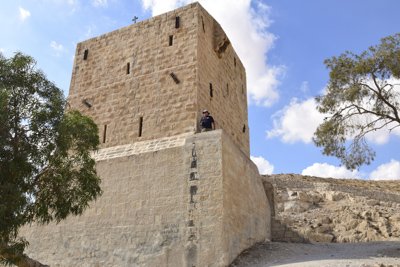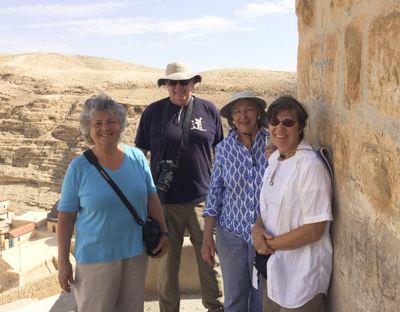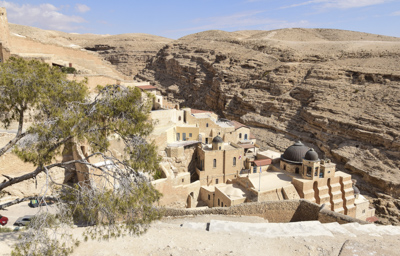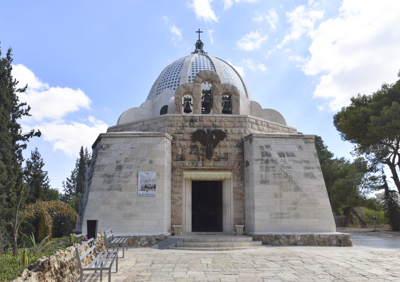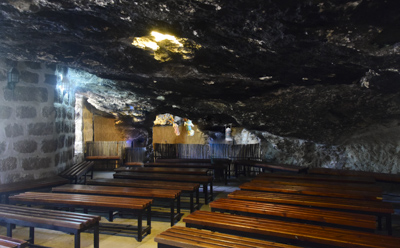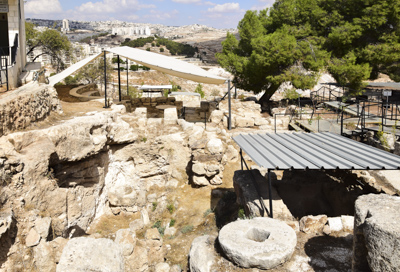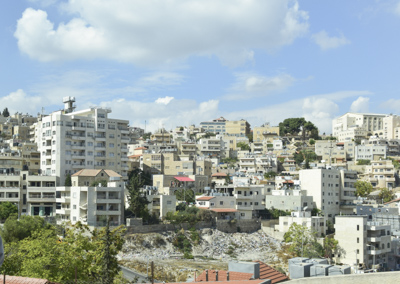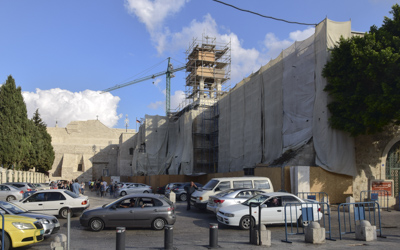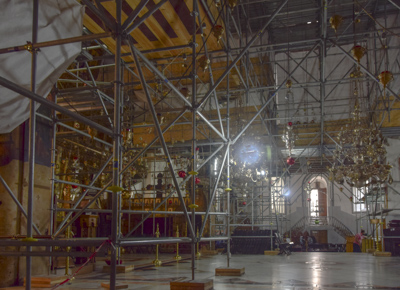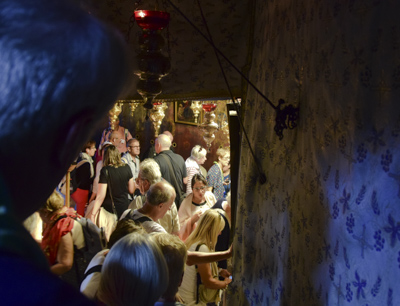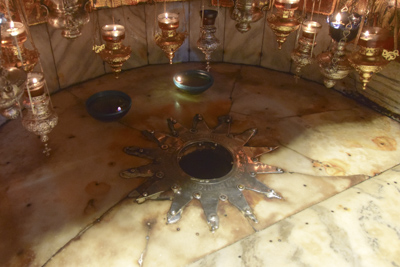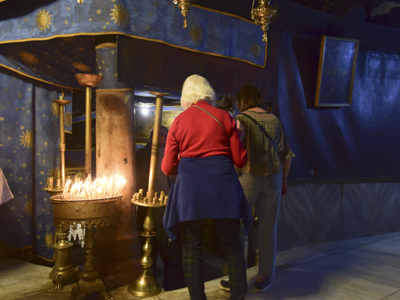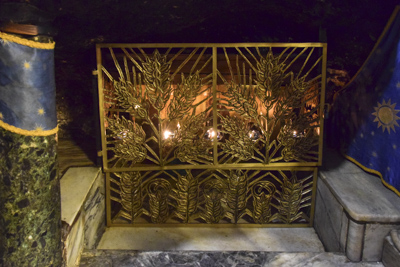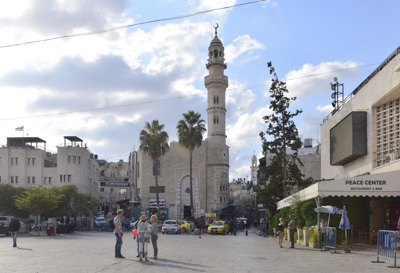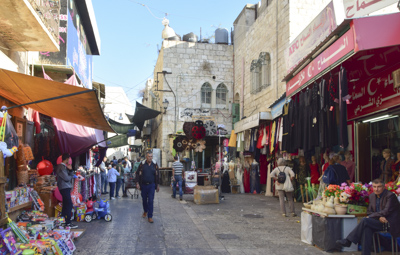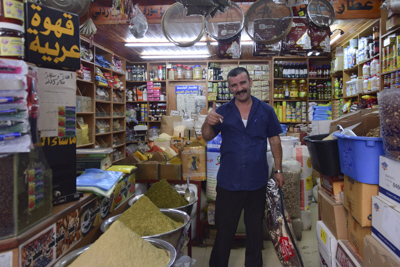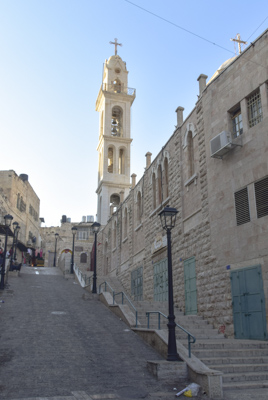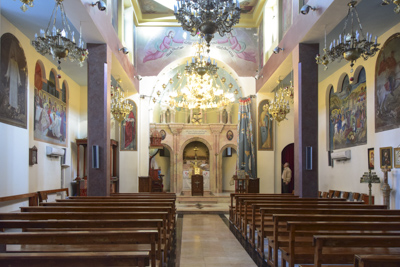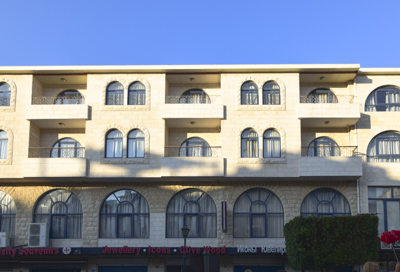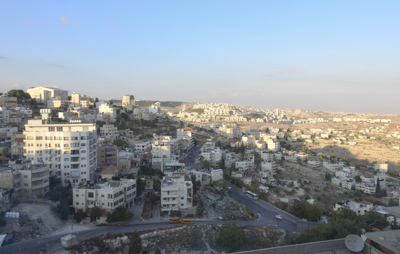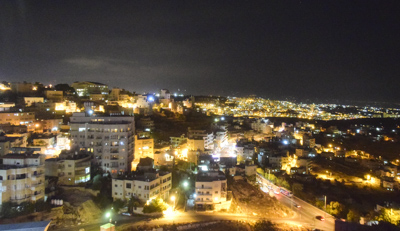Friday – October 20, 2017
All good things must come to an end. This was the last day of the Overseas Adventure Travel tour: Israel: the Holy Land & Timeless Cultures. I had been traveling in Jordan, Israel, and Palestine since September 24th and I was getting a bit ‘road weary.’ The schedule for the day was packed with interesting sights in the West Bank.
After a pleasant evening in the hotel in Jericho, our first destination was the Mount of Temptation. This was a hill in the Judean desert where it was believed that the temptation of Christ took place. On top of the cliff there is a modern wall that sits on the ruins of a fortress which dates from about 130BC.
Half way up the mountain is the Greek Orthodox Monastery of the Temptation or Deir al-Qarantal in Arabic. Access to the monastery is by cable cars, which leaves tourists in a cliffside complex of restaurants, shops, and a cafe.
It was a climb down on a wide path along the side of the mountain and then up steep limestone stairs to reach the monastery.
There was a wonderful view of the city of Jericho and the distant mountains from the monastery:
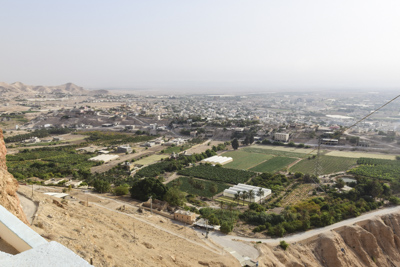
The earliest monastery was constructed by the Byzantines in the 6th century above the cave traditionally said to the place where Jesus spent 40 days and nights fasting and meditating. Jericho was conquered by the Arabs in the 630s and centuries later invaded by the Crusaders in 1099. Two churches were built on the mountain at that time.
The current monastery was built in 1895 around a cave chapel that marks the stone where Jesus supposedly sat and prayed.
It was great fun to ride in the cable cars and see the panoramic view of the city of Jericho and the ruins of the archeological site we had visited yesterday.
We then drove out into the desert to Nabi Musa. On the way we saw a large group of jeeps gathering on top of a sandy hill for a road race or Jeep surfing.
Nabi Musa means “Prophet Moses” in Arabic and it is believed that this is the site of the tomb of Moses.
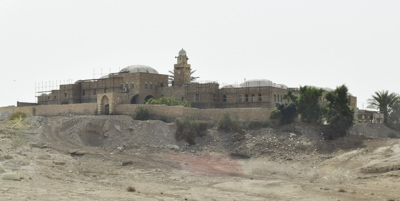
This is also the name of a seven-day festival held here in the spring. The celebration is considered “the most important Muslim pilgrimage in Palestine.” The Jerusalem-Jericho road was one of the primary routes used to make a pilgrimage to Mecca.
Originally, the building was a point from which pilgrims could look across the Jordan Valley to see Mout Nebo where the tomb of Moses was thought to be located.
Negev Bedouin tribes share a belief in the sanctity of the site. We looked into one of the stone rooms at the large sarcophagus covered with a green silk cloth. There was much reconstruction going on which was planned to be finished in 2018.
We left and drove through the desert again to the city of Al-Eizariya, sometimes referred to by its medieval name of Bethany.
The city is located on the southeastern slope of the Mount of Olives (Area B), less that two miles from Jerusalem. The name al-Eizariya refers to the story of Lazarus of Bethany who was raised from the dead.
We were lucky to be able to gain access into the Roman Catholic Church of Saint Lazarus, which was completed in 1955 and is under the “Custody of the Holy Land Franciscan Friars.”
Since the 16th century, the site of the tomb has been occupied by the al-Uzair Mosque. The entrance to the tomb today is down a flight of uneven rock-cut steps from the street to a square chamber serving as a place of prayer. There were additional steps leading to a lower chamber believed to be the tomb of Lazarus.
We had an excellent Palestinian lunch nearby in Bethany, then continued further into the desert to Wadi Qelt in the eastern part of the West Bank, occupied territories. The valley, or wadi in Arabic, is believed to be the “Valley of the Shadow” mentioned in Psalm 23.
The bus stopped and parked by the side of the road and we got off to look around at the magnificent scenery. We just needed a caravan of camels to complete the picture.
We walked up to the top of the hill with a band of Israeli bicyclists. I watched as the young men peddled their bicycles over the rough terrain.
At the summit, we were all rewarded with a view across the valley of the Monastery of St. George of Choziba. The monastery is a religious complex carved into the sheer rock wall of a narrow gorge. The valley parallels the old Roman road to Jericho and is the backdrop for the parable of the Good Samaritan.
St. George’s Monastery began in the 4th century with a few monks who wanted a desert experience and lived in caves along the cliffs. The monastery was founded in the 5th century by John of Thebes, but named after another monk, St. George of Koziba.
The monastery went through many centuries of destruction and rebuilding. It was completely restored by a Greek monk named Callinicos between 1878 to 1901. A few monks still live in the compound which is one of five monasteries still functioning in the Judean Desert. The monastery is open to pilgrims and visitors. Recently, access has been improved for visitors who wish to hike for three hours to get to the complex.
We drove back to the city of Jericho, which means “city of palms,” and walked around the center of town.
Our last stop for the day was “The Old Sycamore Tree,” which recalls a biblical story of the tax collector, Zacchaeus. The tree has helped Jericho to attract visitors and pilgrims to the city.
The tree is on the pastoral grounds of the new Russian Museum, which was built in 2011. However, we did not have time to visit.
Like every other place I have visited, among the archeological and historical sights, the real treasures are the people who live there and interact with us. The Palestinian man in the photo below offered us dates and sang a lovely song to our group in English. He spoke about kindness and good will toward all people.
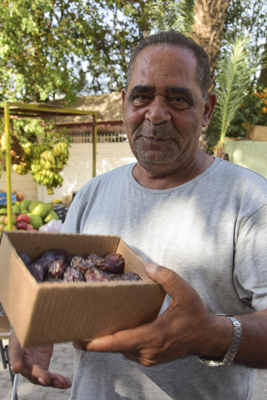
Back at the hotel we enjoyed a wonderful farewell dinner and said our goodbyes to each other and to Hisham Ikhmayes, our excellent Palestinian guide. Hours later, a car drove me from Jericho to the airport in Tel Aviv. Driving quickly along dark roads through Israel at four o’clock in the morning was a fitting end to this amazing journey in this part of the Middle East.
I took the picture above from my window on the plane in Paris. It had been raining and the sun was attempting to rise. No more deserts. No more camels. No more palm trees. I was north again; almost home…..
